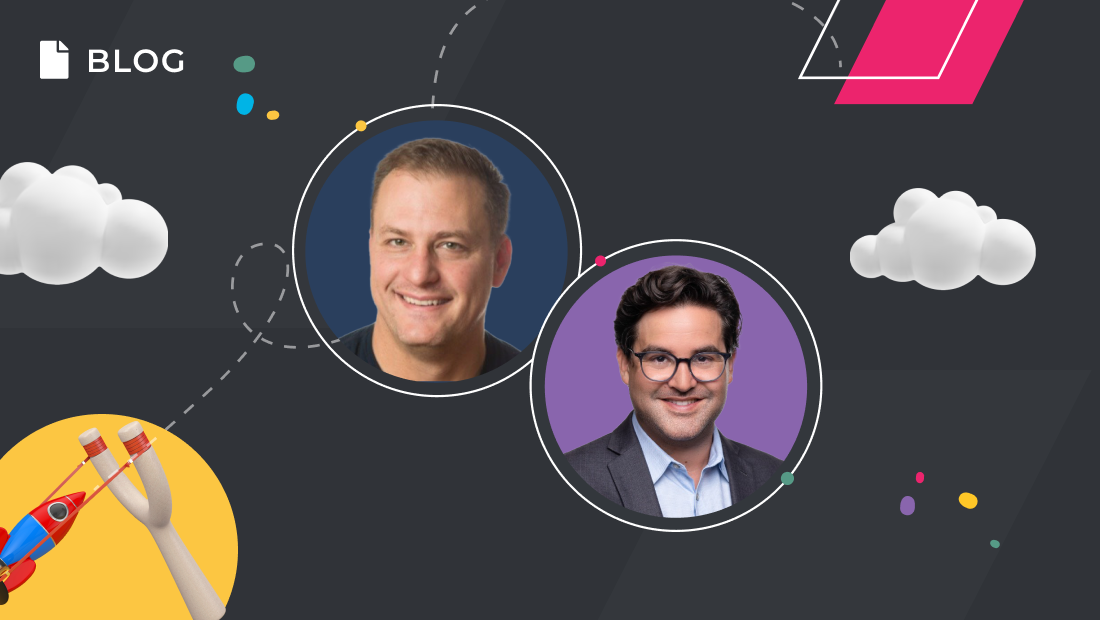There is increased pressure on tech buyers to make sure there is a clear need, quick value, and obvious ROI for any software purchase.
This pressure is true if you’re in Marketing or Sales, but even more so if you’re in Customer Success. There are a lot of reasons buying CS technology has unique considerations. Understanding those considerations can mean the difference between a CS leader getting the green light to invest in a new technology platform, or leaving them to “make due” with spreadsheets and disconnected systems.
When exploring the ins and outs of investing in CS technology in our recent Catapult Webinar Series, we brought perspective from industry experts who have seen the process from the vantage point of dozens of customer success technology buyers. Saul Gurdus, founder of Method Garage, and Nadav Shem-Tov, founder of NST Success Consulting, shared their perspective on how CS leaders can be best prepared to buy, implement, and make an impact with a customer success software platform.
Why should Customer Success have its own tech stack?
Nadav: Customer success is still a relatively new function in business compared to disciplines like marketing and sales. Organizations have tried to have CS teams work in tech stacks meant for those other functions, but that doesn’t work. Those systems are built to be fundamentally different. The data, interactions, and processes that support productivity for Customer Success personnel don’t exist in those systems in the same way.
Saul: You can make an argument that Customer Success Managers (CSMs) have a bigger need than any other discipline in the company to have a 360 view into the customer. The CSM is the quarterback of success and needs an aggregate view into the customer. If it’s not at their fingertips, they still need to go get it so their time would be spent mining for that data. Having a dedicated CS tech stack is justified, but you need to be ready for the technology in order to get value from it.
When is the right time to buy a customer success technology solution?
Saul: We’ve interviewed more than 40 Customer Success leaders to understand this. We heard horror stories and went deep into the challenges companies faced within their CS program when attempting to adopt technology. As a result of that effort, we partnered with Gainsight on a Value Creation Assessment so that companies can answer a few questions to determine if they are ready, and if not, where they need to place attention on things like data, resource needs, and organizational alignment BEFORE acquiring a solution.
Nadav: Timing to purchase and apply CS technology is so important to understand, and it’s unique to each organization based on their maturity. I’ve seen clients who bought and struggled because they hadn’t taken the time to get strategy, metrics, and other key program elements figured out before they made the purchase. And, I’ve also been asked to consult with companies who waited too long. By the time they feel ready, it’s too late because it takes time to set up and configure the technology, which can be really daunting when you’ve already got the pressure of growth on you from the business.
For today’s CS leaders, what is the single most important buying criteria for customer success technology?
Nadav: Scalability of the solution comes up a lot for companies I work with. Companies need to consider that from a couple of perspectives. Of course, it needs to meet the changing and growing demands of your customer success strategy. It also needs to consider your number of users, how it can pull data from other business systems, and more. Making sure you build a CS tech stack that gets you value quickly, and can also grow with you, is more and more important nowadays.
Saul: We hear that earlier-stage teams are looking for a partner who can provide guidance. They want help evolving their maturity. Later-stage teams look for scalability and the ability to manage complexity; and, unfortunately, given economic pressures, more buyers are assessing whether or not a vendor will continue to be around to support their needs in a couple of years.
Scalability seems to be huge, but it can mean different things in different organizations. Give us more context for how you talk about scalability with the CS leaders you speak with.
Saul: Most of the CS leaders we speak with think about scalability in terms of how they can scale their own operations. They know they can’t keep hiring headcount to scale, and they need to be able to scale CSM productivity without overwhelming and burning out the team. Technology can help augment and enable the strategy, but it isn’t where the answer to scaling starts.
Nadav: Well-defined processes are a starting point, so you can deliver consistently across the customer journey. If you start with repeatability in your processes, then you can unlock scalability with technology.
Are there standout features for your CSMs that are non-negotiable when it comes to purchasing a CS technology?
Nadav: Integrations with other tools are a must. Being able to get data from other systems and teams is imperative, but you need to make certain to understand how key integrations work to enable the strategies you expect to execute.
Another key feature is collaboration. These tools should allow cross-functional teams to have visibility into interactions with a customer, and let those teams collaborate on customer strategies related to renewals and expansions.
Finally, automation. Being able to take things off the CSM’s plate allows them to spend time on the true intent of their work, to make their customers successful.
Saul: Adoption by the CSM is make or break to the technology making an impact. As a leader, you need to know what the feature is that will create the draw to the system for your CSMs. Many buyers are including CSMs in the buying process. They’ll be able to quickly identify features that will make their lives easier. Then they can be their own champions in driving value from the platform.
What should CS leaders consider as the success criteria for their CS tech stack?
Nadav: You can track adoption of the platform, and that is important. It’s only part of a broader framework though. You also need to define tangible business outcomes related to key metrics like Net Retention Revenue (NRR). Challenge your vendor to help you define those outcomes with you, and have them show you how you’ll be able to track that over time so you can be certain of attaining those outcomes.
Creating a customer success technology stack is no longer a nice-to-have for organizations building durable, sustainable SaaS businesses. Simply purchasing a platform doesn’t make success a slam dunk either. Our guest experts agreed on the best place to start:
- Make an honest assessment of where you’re at currently in your customer success journey.
- Start small and be laser-focused on driving initial value from the system.
- Be prepared to expand the application and use of the system, and make sure your system can grow with you so you don’t find yourself repeating the process all over again.
Ready to get on the path to scalable, durable growth? Check out Gainsight Essentials Accelerator.

